Chapter 10
advertisement
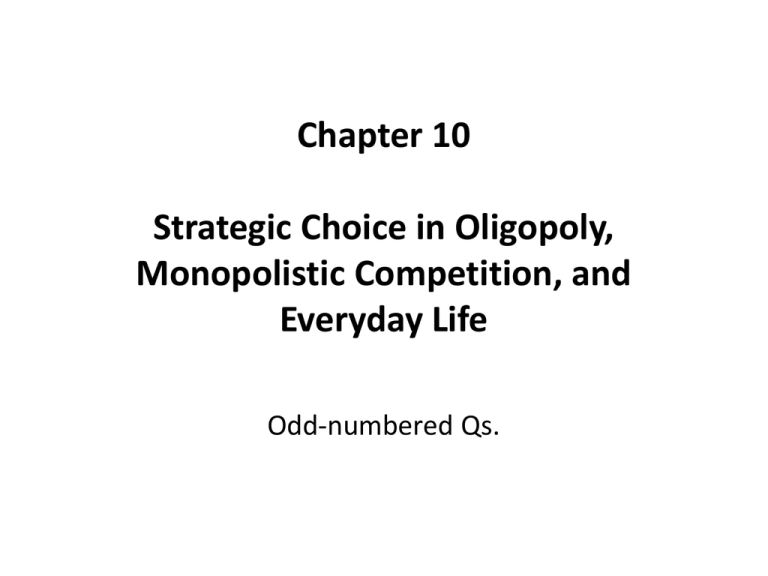
Chapter 10 Strategic Choice in Oligopoly, Monopolistic Competition, and Everyday Life Odd-numbered Qs. Problem #1, Chapter 10 • In studying for his economics final, Sam is concerned about only two things: his grade and the amount of time he spends studying. A good grade will give him a benefit of 20; an average grade, a benefit of 5; and a poor grade, a benefit of 0. By studying a lot, Sam will incur a cost of 10; by studying a little, a cost of 6. Moreover, if Sam studies a lot and all other students study a little, he will get a good grade and they will get poor ones. But if they study a lot and he studies a little, they will get good grades and he will get a poor one. Finally, if he and all other students study the same amount of time, everyone will get average grades. Other students share Sam’s preferences regarding grades and study time. Solution to Problem #1 (1) • A) Model this situation as a two-person prisoner’s dilemma in which the strategies are to study a little and to study lot, and the players are Sam and all other students. Include the payoffs in the matrix • Payoff = benefit - cost • Think of all possible combinations of outcomes – Sam studies a lot while all others also study a lot • Sam’s payoff: 5-10 =-5; all others’ payoff: 5-10=-5 – Sam studies a lot but all others study a little • Sam’s payoff: 20-10 =10; all others’ payoff: 0 – 6 = -6 Solution to Problem #1 (2) – Sam studies a little but all others study a lot • Sam’s payoff: 0-6 = -6; all others’ payoff: 20-10= 10 – Sam studies a little while all others also study a little • Sam’s payoff: 5-6= -1; all others’ payoff: 5-6= -1 • Put all these possible combinations into a payoff matrix Solution to Problem #1 (3) All others Study a lot Study little Study a lot -5 for Sam; -5 for others 10 for Sam; -6 for others Study a little -6 for Sam; 10 for others -1 for Sam; -1 for others Sam Solution to Problem #1 (4) • B) What is the equilibrium outcome in this game? From the students’ perspective, is it the best outcome? • To find the equilibrium outcome, we first need to find out how will each player behave in the preparation for final • The dominant strategy refers to the best strategy for an individual player regardless of what all players do • The dominated strategy refers to the strategy that is always inferior to the dominant strategy • In this question, both Sam and all others have a dominant strategy of studying a lot Solution to Problem #1 (5) • Therefore, each will follow the best strategy by studying a lot for preparation for final • Equilibrium outcome: both studying a lot • As a result, both Sam and all others will end up with an average grade of 5 or a payoff of -5 • However, this is actually not a best outcome • From the students’ perspective, for everyone to study a little would turn out to better than the equilibrium outcome Problem #3, Chapter 10 (1) • Blackadder and Baldrick are rational, self-interested criminals imprisoned in separate cells in a dark medieval dungeon. They face the prisoners’ dilemma displayed in the matrix • Assume that Blackadder is willing to pay $1000 for each year by which he can reduce his sentence below 20 years. A corrupt jailer tells Blackadder that before he decides whether to confess or deny the crime, she can tell him Baldrick’s decision. How much is this information worth to Blackadder? Problem #3, Chapter 10 (2) Blackadder Confess Deny Confess 5 years for each 0 year for Baldrick; 20 years for Blackaddder Deny 0 year for Blackadder; 20 years for Baldrick 1 year for each Baldrick Solution to Problem #3 (1) • To find out how much does the information worth to Blackadder, we will need to know whether the information is useful • If one knows the other’s dominant strategy, one will know what will the other do regardless what one does • Based on the payoffs in the matrix, we know: – Baldrick has a dominant strategy of confess – Blackadder has a dominant strategy of confess – The equilibrium outcome is thus confess Solution to Problem #3 (2) • Therefore, Baldrick will confess no matter Blackadder confesses or denies • The information from the corrupt jailer is thus useless • It is worth nothing to Blackadder Problem #5, Chapter 10 • Imagine yourself sitting in your car in a campus parking lot that is currently full, waiting for someone to pull out so that you can park your car. Somebody pulls out, but at the same moment a driver who has just arrived overtakes you in an obvious attempt to park in the vacated spot before you can. Suppose this driver would be willing to pay up to $10 to park in that spot and up to $30 to avoid getting into an argument with you. (That is, the benefit of parking is $10 and the cost an argument is $30.) At the same time he guesses, accurately, that you too would be willing to pay up $30 to avoid a confrontation and up to $10 to park in the vacant spot. Solution to Problem #5 (1) • A) Model this situation as a two-stage decision tree in which his bid to take the space is the opening move and your strategies are (1) to protest and (2) not to protest. If you protest (initiate an argument), the rules of game specify that he has to let you that the space. Show the payoffs at the end of each branch of tree. • Start from the first node: the other driver either leave you the parking lot or overtake the parking lot • If the driver leaves you the parking lot, you and the driver will not engage in any form of argument or dispute • You will finally get a benefit of $10 as having your car parked Solution to Problem #5 (2) • However, if the driver overtakes the parking lot, you will end having either a defer or a protest against the act of the driver • If you protest, you will get a payoff of -$20 and the driver will have a payoff of -$30 – Why are that? • Payoff = Benefit – Cost • Your payoff: $10 - $30 = -$20 • The driver’s payoff: -$30 • If you defer, you will get a payoff of $0 and the driver will have a payoff of $10 Solution to Problem #5 (3) • If you defer, you will get a payoff of $0 and the driver will have a payoff of $10 – Why are that? • If the driver gets the parking spot, he or she will enjoy the associated benefit ($10) • Both of you and the driver do not have to enter an argument The other driver leaves you the spot $10 for you; $0 for the driver You protest -$20 for you; -$30 for the driver The other driver overtakes the parking spot You defer $0 for you; $10 for the driver Solution to Problem #5 (4) • B) What is the equilibrium outcome? • The driver will overtake the parking spot and you will have to wait for another spot – Why? • Given in the question that he has made an accurate guess that you would be willing to pay up to $30 to avoid a confrontation and pay up to $10 for a parking spot • The driver understands that if he or she overtakes the parking spot, you will probably not protest but defer to another spot as your payoff is -$20 if protest but $0 if defer • You will minimize your loss but deferring to another spot Solution to Problem #5 (5) • C) What would be the advantage of being able to communicate credibly to other driver that your failure to protest would be a significant psychological cost to you? • Suppose the other driver perceived that you would experience a psychological cost of $30 not only if you entered into a dispute, but also if you failed to protest his unjust behaviour • The driver would then think your net cost of becoming involved in an argument would be $0 • This perception would change your protest payoff to $10 • As a result, the driver would no longer gain from taking the parking spot Problem #7, Chapter 10 • Consider the following game, called matching pennies, which you are playing with a friend. Each of you has a penny hidden in your hand, facing either heads up or tails up (you know which way the one in your hand is facing). On the count of “three,” you simultaneously show your pennies to each other. If the face-up side of your coin matches the face-up side of your friend’s coin, you get to keep the two pennies. If the faces do not match, your friend gets to keep the pennies. • A) Who are the players in the game? What are each player’s strategies? Construct a payoff matrix for the game. Solution to Problem #7 (1) • Elements of the game – Players: you and your friend – Strategies: head or tail – 4 possible outcomes: • 2 heads- you get the other penny from your friend who will end up have nothing • 2 tails- you get the other penny from your friend who will end up have nothing • 1 head from your side and 1 tail from your friend’s side- your penny will be taken by your friend • 1 tail from your side and 1 head from your friend’s side- your penny will be taken by your friend Solution to Problem #7 (2) You Head Tail Head 1 for you; -1 for your friend -1 for you; 1 for your friend Tail -1 for you; 1 for your friend 1 for you; -1 for your friend Your friend Solution to Problem #7 (3) • B) Is there a dominant strategy? If so, what? – No. There are no dominant strategy – No single strategy that is best regardless of what your friend’s coin outcome – Head and tails offer same payoff to both you and your friends • C) Is there an equilibrium outcome? If so, what? – No. There is no equilibrium outcome – Every time when your friend plays one side, you will want to match that side Problem #9, Chapter 10 (1) • Two airplanes manufacturers are considering the production of a new product, a 150-passenger jet. Both are deciding whether to enter the market and produce the new planes. The payoff matrix is as follows (payoff values are in millions of dollars): Problem #9, Chapter 10 (2) Airbus Produce Don’t produce Produce -5 for each 100 for Boeing; 0 for Airbus Don’t produce 0 for Boeing; 100 for Airbus 0 for each Boeing Problem #9, Chapter 10 (3) • The implication of these payoffs is that the market demand is large enough to support only one manufacturer. If both firms enter, both will sustain a loss. • A) Identify two possible equilibrium outcomes in this game • Based on the payoff matrix above, we know that – Given that one company produces (does not produce), the other company will get a higher payoff by not producing (producing) • 1-equilibrium outcome: Airbus produces while Boeing does not produce • 2-equilibrium outcome: Boeing produces while Airbus does not produce Problem #9, Chapter 10 (4) • B) Consider the effect of a subsidy. Suppose the European Union decides to subsidize the European producer, Airbus, with a check for $25 million if it enters the market. Revise the payoff matrix to account for this subsidy. What are the new equilibrium outcome? • Due to the subsidy from EU, producing becomes a dominant strategy for Airbus • Given Airbus is producing, Boeing will start away from the market • For the revised payoff matrix, all Airbus’ payoffs are added by 25 Problem #9, Chapter 10 (5) New equilibrium is shown in blue Produce Airbus Produce Don’t produce 20 for Airbus; -5 for Boeing 100 for Boeing; 0 for Airbus Boeing Don’t produce 125 for Airbus; 0 for Boeing 0 for each Problem #9, Chapter 10 (6) • C) Compare the two outcomes (pre- and post-subsidy). What qualitative effect does the subsidy have? • Without the subsidy, both airplane manufacturers kind of compete on the same ground • Either one will enter the market but which will enter remains uncertain • However, with the subsidy from EU, Airbus is “granted” a dominant strategy ensuring its production and eliminating production by Boeing
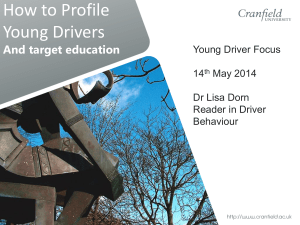
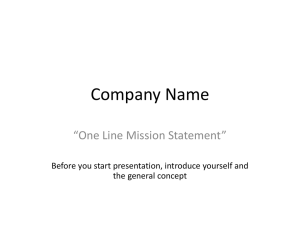


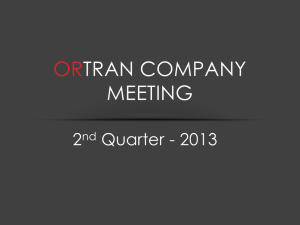
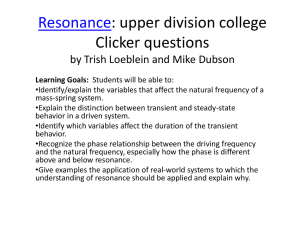
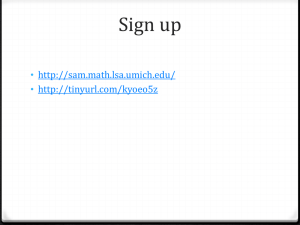
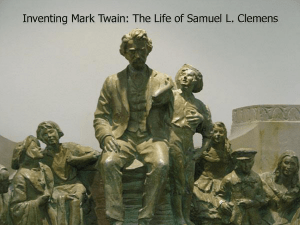
![The Politics of Protest [week 3]](http://s2.studylib.net/store/data/005229111_1-9491ac8e8d24cc184a2c9020ba192c97-300x300.png)
